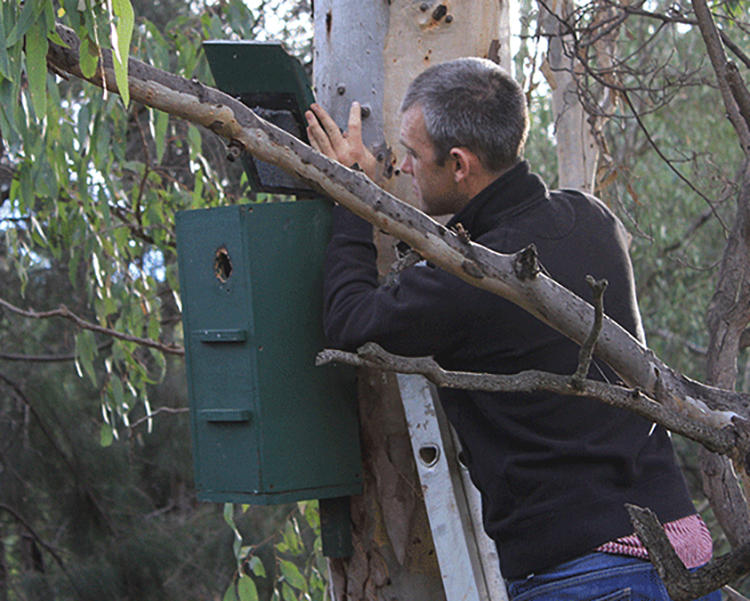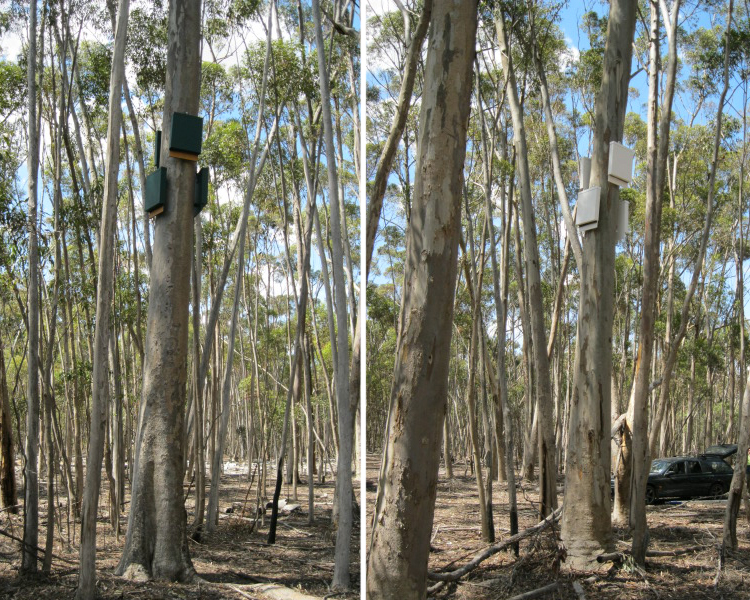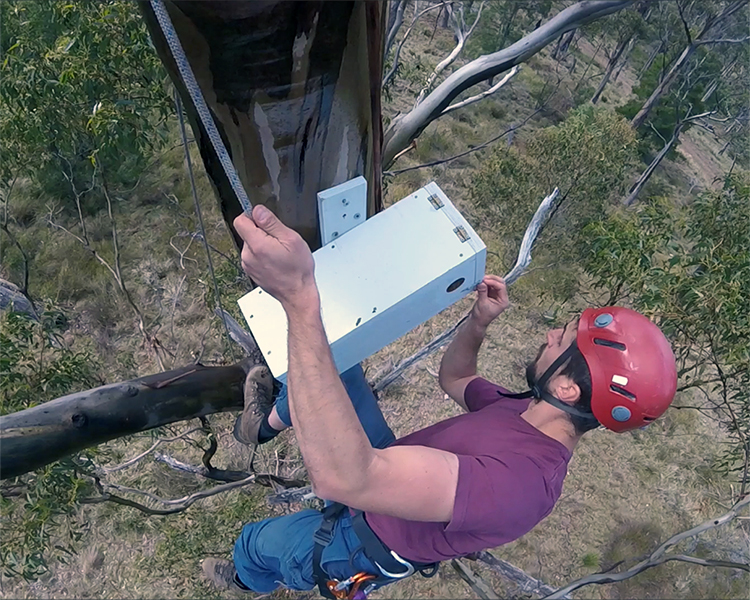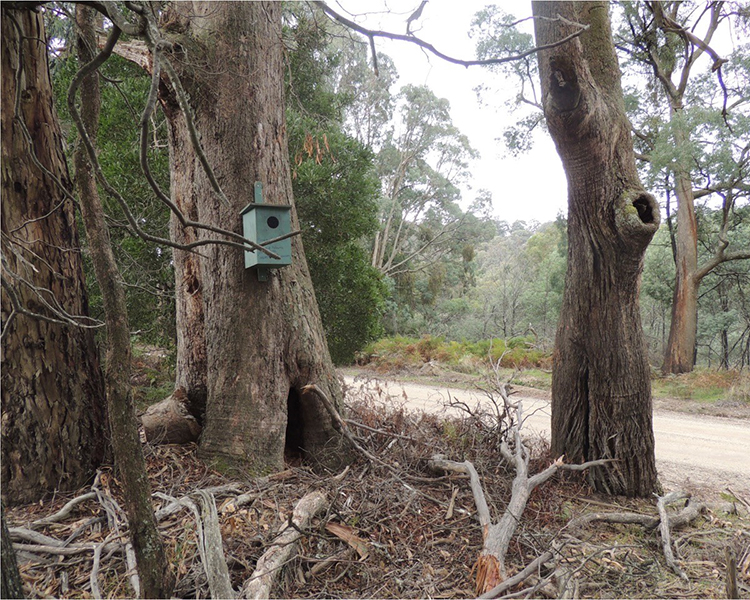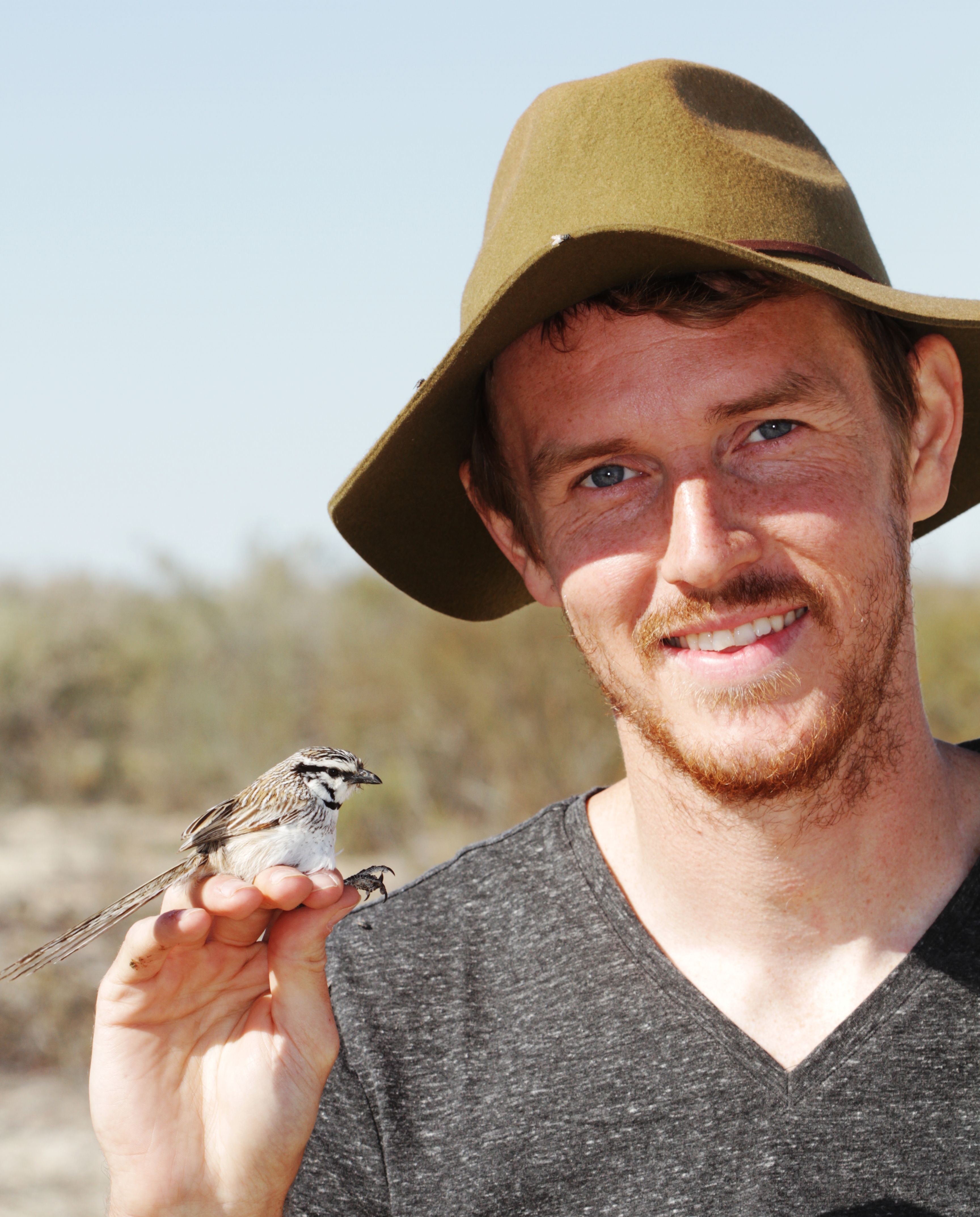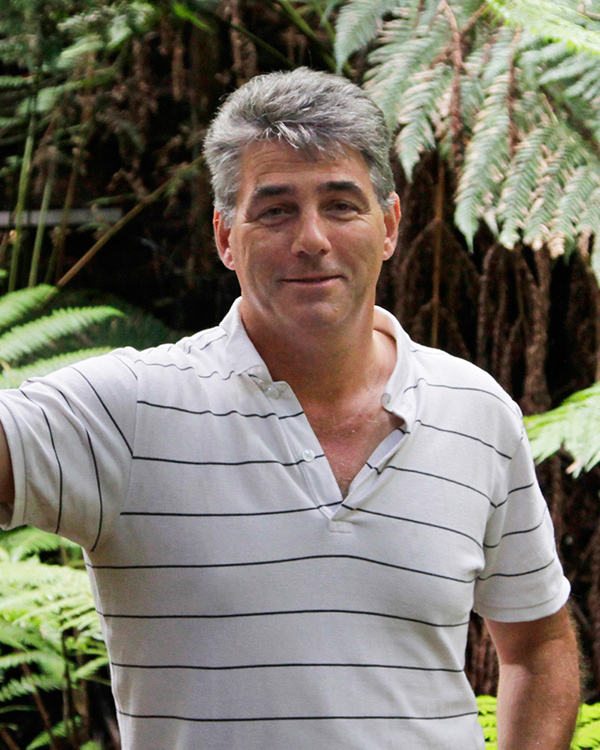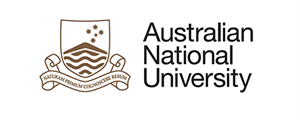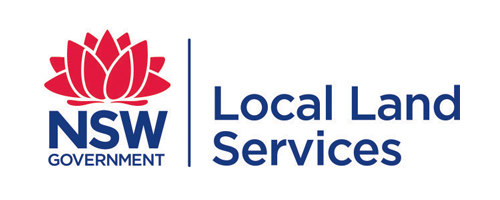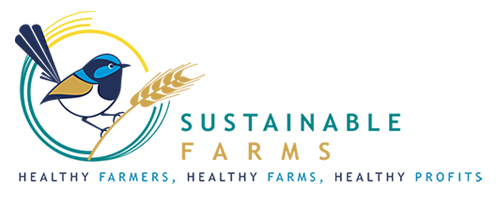
Project: 1.2.1.5
Testing the effectiveness of nest boxes for threatened species
Project Leaders: David Smith , David Lindenmayer
Research in Brief
This project entails establishing purpose-built nest boxes within young tree plantings and remnant box gum grassy woodland vegetation on farms and along roadsides.
The aim is to determine the usefulness of artificial hollows as an effective offsetting tool for tree removal in agricultural landscapes (e.g., to offset the loss of paddock trees as a result of cropping intensification and road widening). The study also explores the value of nest boxes in promoting connectivity for hollow-dependent vertebrates such as arboreal marsupials.
A particular focus of this work will be the value of nest boxes for threatened species such as the squirrel glider, brush-tailed phascogale, superb parrot and brown treecreeper.
Sugar gliders in nest box. Photo: Mason Crane
Why is the research needed?
More than 200 vertebrate species in Australia are dependent on natural tree hollows and branch cavities in large mature eucalypt trees for nesting, denning and refuge from predators. Some species such as the squirrel glider use hollows as dens and may occupy up to 12 different hollows across their territories. A number of hollow-dependant species are listed as threatened under Australian environmental law, including the squirrel glider and superb parrot.
Hollow-bearing trees are a depleted resource in many parts of Australia, especially within agricultural regions of south-eastern Australia where tree clearing is continuing. Common reasons for current clearing are to establish pivot-irrigated crops or to widen roads. Routine agricultural activities result in the ongoing and incremental loss of large hollow-bearing trees in the landscape, and this has major implications for the persistence of threatened species in farming landscapes.
Tree hollows may take centuries to develop and in many landscapes a shortage of natural tree hollows has resulted in the localised extinction of several hollow-dependent species such as the brush-tailed phascogale and squirrel glider.
Hollows are also not only used by threatened birds and mammals. Many non-threatened native species and several exotic species such as the Indian minor, common starling and European honeybee also depend on hollows. This exacerbates the impacts of the scarcity of hollows, and can mean many threatened species are forces out of remaining hollows by other species.
Measures to offset the loss of hollow- bearing trees due to development are largely focused on installing nest boxes, with successful delivery based on the number of boxes installed rather than the number of threatened species that use and successfully breed in them. To date, little research has examined the effectiveness of nest boxes as an offset conservation tool.

Checking nest box occupancy during a monitoring program. Photo: Daniel Florance
How will the research help?
The project will evaluate the effectiveness of nest box programs in providing habitat for a range of threatened species. This will include evaluating nest box design and nest box placement and provide recommendations that will inform future nest box programs and vegetation clearance offset strategies in Australia.
The results of this work will be communicated to Landcare groups through an extensive Farm Network extension program and to other groups involved in the construction and deployment of nestboxes.. Improved nest box design will hopefully increase threatened species occupancy and assist with population recovery in farming landscapes.
The research will benefit a wide range of hollow-dependent fauna throughout the Box Gum grassy woodlands of south-eastern Australia.
It will also undertake a review of the effectiveness of a nestbox program which was undertaken as a biodiversity offset to mitigate the impacts of a major road widening project in New South Wales. The results will be of critical relevance to government agencies that manage biodiversity offset programs, and can inform the development of more effective offset conditions on future projects.
What research activities are being undertaken?
Nest boxes have been installed on a large number of farms near Junee and along the Hume Highway between Gundagai and Albury in the South-west Slopes bioregion of New South Wales. The boxes were placed in restoration tree plantings, along roadsides and isolated patches of remnant box gum grassy woodland.
The boxes are checked on a regular basis, and information such as the type of nesting material and species using the boxes is recorded. Information on type and number of threatened, non-threatened and exotic species using the boxes is recorded and this information is compiled for future analysis. The project is also collecting information on the type of nest box being used and nest box condition to refine future box designs and placement.
Who is involved?
Nest boxes were constructed by the the Junee Landcare Networkof Murrumbidgee Landcare Inc and installed on farms near Junee, and additional nest boxes were installed along the Hume Highway by the Roads and Maritime Service as part of the Hume Highway duplication.
Where is the research happening?
The research is being conducted in the South-west Slopes bioregions of southern New South Wales.
When is the research happening?
The project is a long-term study that will continue to 2021.
Further information
For more information please contact:
Mason Crane - mason.crane@anu.edu.au
Top Image: An antechinus using a nest box. Photo: Mason Crane
